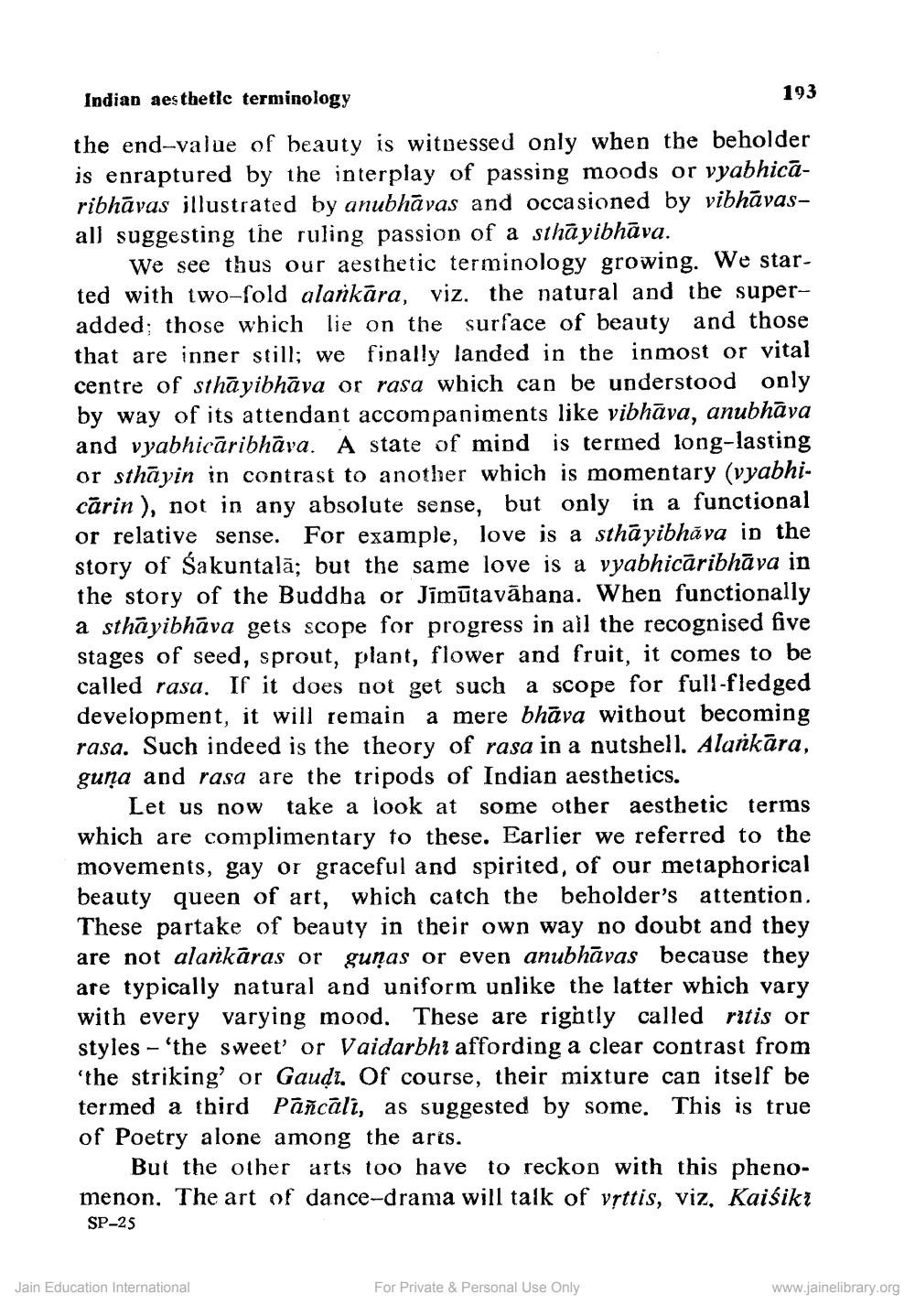________________
Indian aesthetic terminology
193
the end-value of beauty is witnessed only when the beholder is enraptured by the interplay of passing moods or vyabhicăribhāvas illustrated by anubhāvas and occasioned by vibhāvasall suggesting the ruling passion of a sthayibhāva.
We see thus our aesthetic terminology growing. We started with two-fold alarkāra, viz. the natural and the superadded; those which lie on the surface of beauty and those that are inner still; we finally landed in the inmost or vital centre of sthāyibhāva or rasa which can be understood only by way of its attendant accompaniments like vibhāva, anubhāva and vyabhicāribhāva. A state of mind is termed long-lasting or sthāyin in contrast to another which is momentary (vyabhicarin), not in any absolute sense, but only in a functional or relative sense. For example, love is a sthāyibhāva in the story of Sakuntalā; but the same love is a vyabhicāribhāva in the story of the Buddha or Jīmātavāhana. When functionally a sthayibhāva gets scope for progress in all the recognised five stages of seed, sprout, plant, flower and fruit, it comes to be called rasa. If it does not get such a scope for full-fledged development, it will remain a mere bhāva without becoming rasa. Such indeed is the theory of rasa in a nutshell. Alarkāra, guna and rasa are the tripods of Indian aesthetics.
Let us now take a look at some other aesthetic terms which are complimentary to these. Earlier we referred to the movements, gay or graceful and spirited, of our metaphorical beauty queen of art, which catch the beholder's attention. These partake of beauty in their own way no doubt and they are not alarkāras or gunas or even anubhāvas because they are typically natural and uniform unlike the latter which vary with every varying mood. These are rightly called ritis or styles - 'the sweet' or Vaidarbhi affording a clear contrast from 'the striking' or Gaudi. Of course, their mixture can itself be termed a third pañcali, as suggested by some. This is true of Poetry alone among the arts.
But the other arts too have to reckon with this phenomenon. The art of dance-drama will talk of vșttis, viz. Kaisiki SP-25
Jain Education International
For Private & Personal Use Only
www.jainelibrary.org




